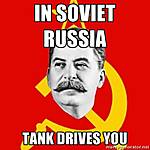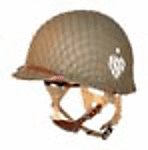Quoted Text
Mike,
your soldering work is amazing, heck, the whole project is amazing! I'd like to know what type of torch you're using as I just started to play with the process and after having not much luck with the iron I had on hand I grabbed my full size benzomatic torch which worked in a pinch.
My current problem is with trying to solder together a searchlight mount. I got the first pivot point on no problem, bent the frame to shape and of course can't get the other pivot on to save my life. I had the setup clamped in a metal vise and concluded that was acting as a heat sink so I lined the jaws with thin wood sheets. Now I'm thinking the scorching of the wood contaminated the joint. Any ideas?
Sean
Hi Sean,
Thanks for the kind words.
This is my "go to" torch.

I bought this one at Harbor Freight, but Northern Tools and Micro Mark and many other places carry similar butane micro-torches.
Without seeing the parts and assembly you're working on, it's difficult to offer any specific suggestions. It sounds like the size and mass of the clamp are an issue. Try using smaller clamps and a more delicate clamping set-up.
Generally speaking, there are several things to keep in mind:
1) You must use a flux, either paste or liquid. Rosin core solders are no good for scale model work. Tinning fluxes are messy and are not especially useful. Ordinary fluxes are cleaner to use. If you use a paste flux, pre-heat the joint before add the solder chips to get the flux to flow.
2) Use a solid (not rosin core) solder and cut it into small chips. The size of the chips should be matched to the size of the joints and parts - but my rule is the smaller the better.
(The solder chips I used on the latch assembly, above, were about the size of medium grains of salt mashed flat. Difficult to describe, but probably in the .5mm x .5mm x .1 mm thick range.)
3) Clamping the parts together is generally the most difficult part of the job. I use everything from cross-locking tweezers, to spring clamps, to hand-held tweezers and sometimes even my PE bending tool.
I use a piece of tile to do most of my soldering on. It's fire proof and heat resistant. Occasionally, I'll even tape the parts to the tile and solder directly on it.
4) Multiple solder joints near each other can be problematic. If you're not careful, heating one joint can melt the previous joint.
Often, you need to use either heat sinks or solders with different melting points or both.
Any small metal clamping tool can be used as a heat sink either on the already soldered joint of between the two joints. Also, bits of wet paper towel can be used. Gary Boxall (a very good modeler) suggests using surgical lube as a paste-type heat-sink.
Most of the time, though, I simply use a quick touch with the torch. As soon as the solder melts and flows, remove the heat to avoid overheating the assembly.
Here, small solder chips pay off since they melt quicker than larger chunks of solder or trying to melt directly off the solder wire roll.
5) Remember that the melted solder always flows towards the heat source, so think ahead and place the solder chips and apply the heat with this in mind.
6) Large clamps or bracing and blocking the PE assembly on a tile surface or a metal ruler, etc, are sometimes necessary, but these will work as unintended heat sinks. You will have to apply enough heat to overcome the sink which can, in turn, be too much heat for previously soldered joints.
If you have to do this, try to leave the joint to be soldered open and on the edge or overhanging the potential heat sink so that you can heat the joint with the least amount of heat possible.
7) You can contaminate the joint with burned flux, scorched tape, burned lacquer (sometimes used on the PE by the manufacturer to prevent tarnishing), etc. Your burned wood probably did leave some residue.
I use cotton swabs and / or a small nylon brush and lacquer thinner to clean my PE parts after soldering. If I have burned the flux for one joint, I will often clean the parts before trying to solder the next one.
When necessary, 0000 (4x0) steel wool can be used to buff the PE parts to more aggressively clean them.
After cleaning, you do need to re-flux the joint.
8) Occasionally, tinning the two PE parts can help with tricky joints. Flux the joint areas, apply a chips of solder and heat. Clean the parts, clamp the joint, re-flux, and heat.
The main problem with tinning and model building is that the solder on the tinned joint areas can interfere with good parts alignment leaving you with misaligned parts after the final solder joint. If this happens, reheat the joint and pull the parts apart. Realign, re-clamp, and reheat.
9) Finally, the tighter the joints fit together before soldering, the better they will solder. So, any forming and bending that must be done should be done as precisely as possible. Don't rely on forceful clamping to make the joints tight - unless you absolutely have to. Joints that are forced into alignment have a tendency to spring apart when some other joint is soldered.
HTH,

















































